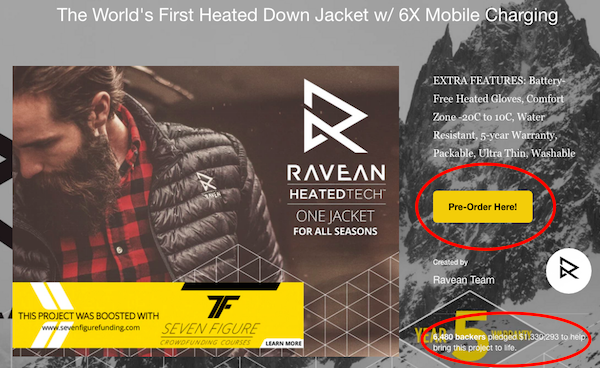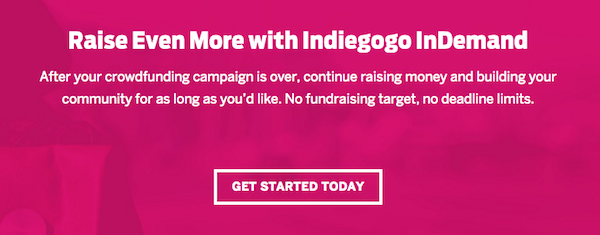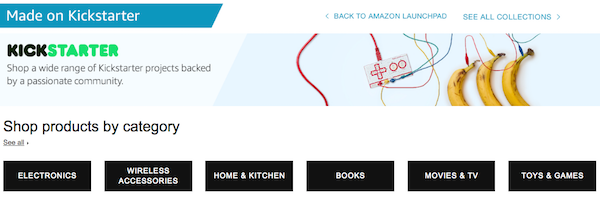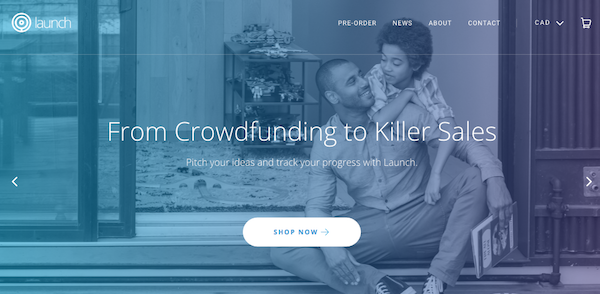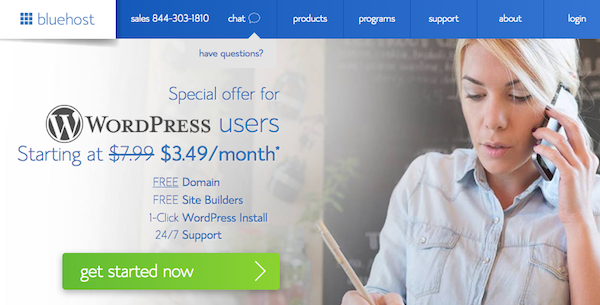I’ve seen this happen more than you might think. A creator launches a campaign and as a result of great marketing or the Kickstarter ecosystem, they begin to see pledges pour in.
In fact, as they’re nearing the end of their campaign, they’re dreading that moment when backers can no longer pledge to their campaign. They’ve created so much momentum and they want to keep the campaign going!
By it’s very nature, crowdfunding is temporal. A specific fundraising duration creates urgency, which is a critical reason why crowdfunding works.
However, there are ways to capture and continue to build this momentum, even after your Kickstarter campaign has ended.
I actually recently got a great email on this very topic from a member of B3 Innovations, a 3d printing hardware company.
“I discovered your podcast a few weeks ago and I have been addicted ever since! I spend a lot of time driving and now I look forward to my commute so I can listen to another episode…
We are working on our second campaign as we speak and definitely learning as much as possible this time around to boost our total funding. I’ve been noticing a trend, and maybe you have covered this in previous episodes, but I’ve seen multiple campaigns launch on Kickstarter… AND launch on Indiegogo after they complete Kickstarter. It seems this is a tactic to boost overall funding…Thanks for your contributions to the crowdfunding community.”
Let’s explore a few ways that you can keep getting orders after your Kickstarter campaign has completed.
1. Spotlight
Kickstarter’s spotlight feature helps creators continue to share their product’s story with backers and members of the press after they’ve successfully completed their campaign.
It also allows creators to create a call-to-action button and direct it to a website of their choice. You can customize the color, text, and URL of the button.
This means that you can direct website visitors to a webpage, online store, or location that they can continue to pledge money to your campaign.
To give you an example, I’ve included the screenshot below from the Ravean campaign, which I interviewed on the podcast. They also put together a great step-by-step course explaining in detail how they raised seven figures on Kickstarter.
They’ve been on my podcast twice and I’m an affiliate for their course.
To sum it up, you can use Spotlight not just to tell your story, but also to direct new customers to a link, be it your website or a place where they can buy your product or continue to support your campaign.
2. Indiegogo InDemand
As a reader mentioned, I have noticed an increasing trend of Kickstarter projects transitioning into the Indiegogo InDemand program. This has actually been happening for a while, and it makes sense.
Indiegogo already has a thriving community of backers and being a part of the program gives creators more exposure than if they were simply on their own website. Also, it takes work to set up a whole new website to accept orders or pledges. Indiegogo makes it easy to continue to accept contributions.
When you enter the InDemand program, you don’t have to set a fundraising goal or duration. You’ll just update your title, tagline, video, pitch description, perks, etc. However, “You will not be able to edit your original funding goal, funding type, currency or any perks that have already been claimed.”
You’ll receive distributions every 4 weeks and be charged the standard 5% + payment processing fees. You can still enter InDemand if you ran a Kickstarter project, however, the fee will be higher.
The big reasons to switch over to InDemand after running a Kickstarter campaign are for the convenience and to become a part of the Indiegogo marketplace. If you drive enough activity, you’ll begin to see some promotion from Indiegogo. “We also regularly feature campaigns on our blog, newsletter, and social media channels.”
To give you an example, I’ll show you screenshots of the YoCam: The Smartest, Lightest Waterproof Camera, which raised $839,145 on Kickstarter and then continued to raise money on InDemand.
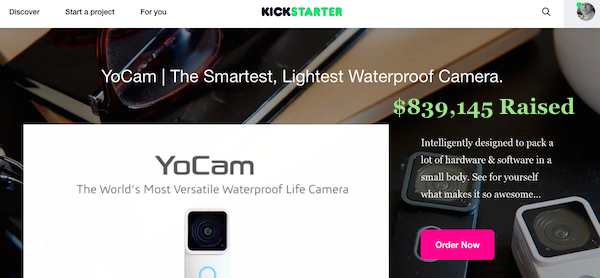
They did an amazing job. Kicktraq shows them experiencing a tremendous amount of growth up until the end of the campaign.
They decided to capture this momentum by launching an accompanying Indiegogo InDemand campaign.
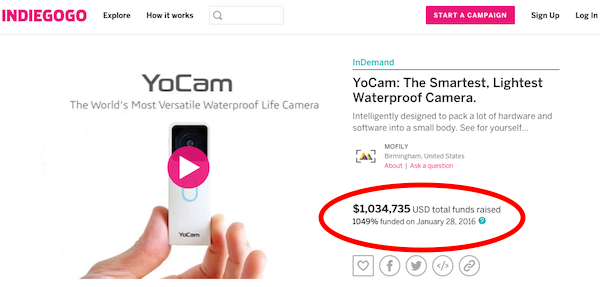
They ended up raising $1,034,735 in total! As you can see, transitioning over to InDemand is one way to capture the momentum you’ve built on Kickstarter.
3. Amazon
You can now sell your Kickstarted product on Amazon, as part of their new Kickstarter Collection section on Amazon Launchpad. It’s pretty to cool some of these projects that were “Made on Kickstarter.”
Scrolling down the list of these different products brings back a lot of memories. I’ve had several of the entrepreneurs behind these products on my podcast. It makes me smile to see how they’ve progressed.
Without a doubt, Amazon is the 2,000 pound gorilla in the ecommerce space. I think that this partnership that Amazon has made with Kickstarter creators is going to be good for both parties and lead to a lot of happy customers and business owners down the road.
Not every entrepreneur has mastered driving traffic to their own website and being a part of a larger marketplace like Amazon is a great way to reap the benefits of continued exposure.
4. Shopify
If you want to drive traffic to your own website and accept orders or pre-orders, then Shopify is a no-brainer.
A lot of entrepreneurs who have been on my podcast use Shopify to manage their online store. It’s easy, relatively inexpensive, and there are a lot of great apps and themes that you have access to.
For example, at the time of writing you could use the Pre-Order Manager app, which I’ve linked to below.
Right now, Shopify costs $9/month for the most basic plan and $29/month for the basic business plan. They offer both free and premium themes that you can choose from when setting up your online store.
5. WordPress
This is another popular option among readers and listeners. Most entrepreneurs will download the free open source version of wordpress and install it on a good hosting provider, like Bluehost (what I recommend) or HostGator.
Then, they’ll install the WooCommerce plugin which enables ecommerce functionality on your website. This will allow you to track sales data, accept payments, keep track of your inventory, manage taxes, and offer shipping.
The great thing about WordPress is that you’ll able to find lots of free and some very professional-looking premium themes online. WordPress has a big community, so there are also free and premium plugins that will expand on the functionality of your website.
How to Accept Donations
Well, that topic is for another article. Luckily, I’ve written another article on that topic, haha. This article lists out a few different wordpress themes that you can use to set up a crowdfunding page or website. Hope it helps!


